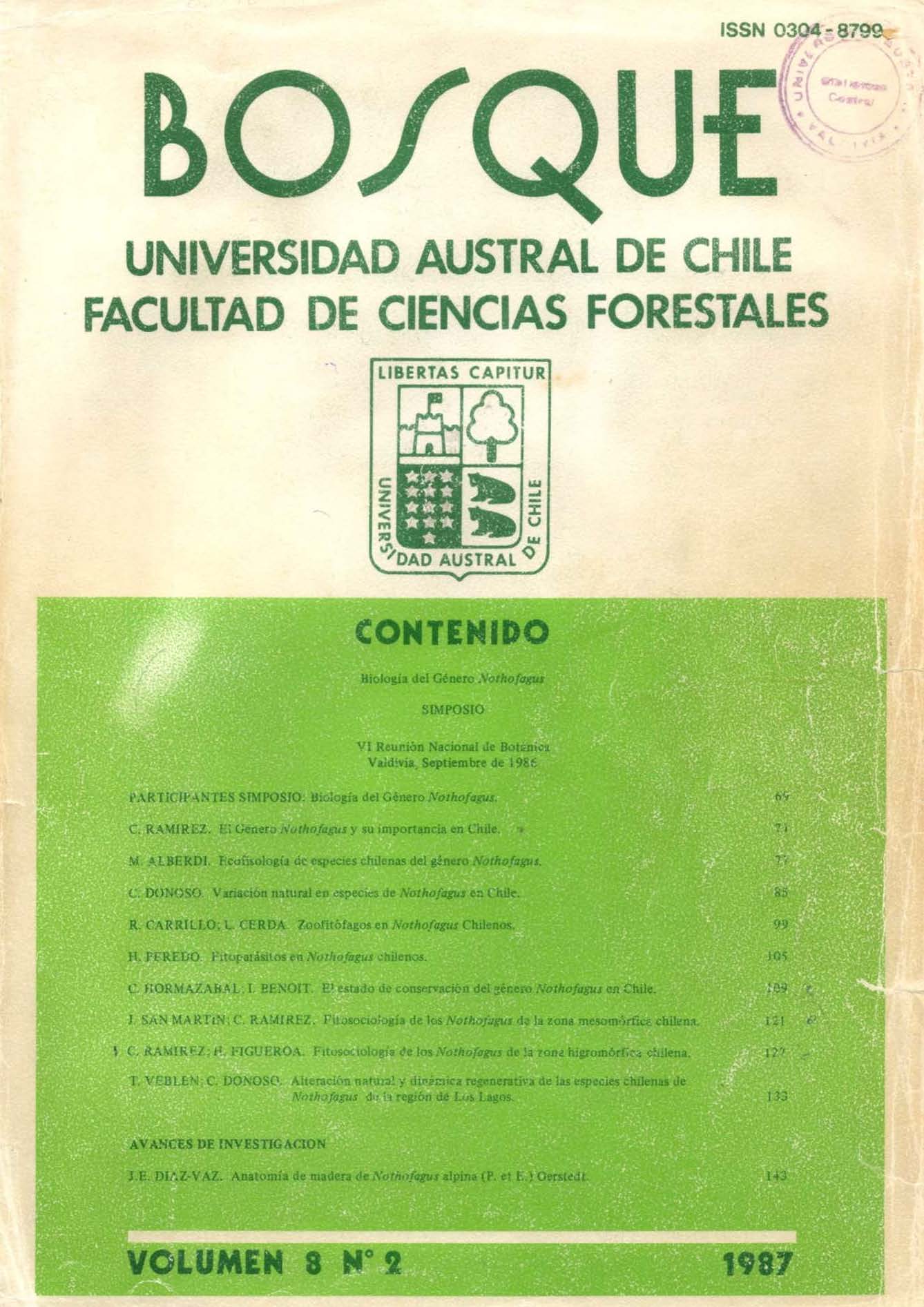Main Article Content
Dec 31, 1987
Abstract
Although natural disturbances play important roles in the regeneration of the common Nothofagus species of the Chilean Lake District (N dombeyi, N. obliqua, N. alpina, and N. pumilio), significant differences exist among these species in regard to regeneration patterns For each species, modes of regeneration are interpreted from the evidence of population age structure, tree spatial patterns, and other attributes of stand structure. Differences in modes of regeneration are discussed in relation to differences in the ecophysiological characteristics of the Nothofagus spp. and variation in the role of competition from associated tree species and bamboos. For the Nothofagus species ocurring at low to mid-elevations, abundant regeneration is dependent on largescale disturbances such as volcanic ash deposition, landslides, fire, and windstorms which devastate entire stands. In contrast, N. pumilio regenerates abundantly following both largescale disturbances and small-scale disturbance in the form of individual treefalls. The need for quantifying the disturbance regimes of the habitats in wich these species occur is emphasized.


